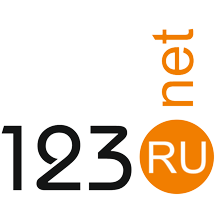'Enigmatist' creator combines puzzlemaking and magic for immersive evening of theater
“The Enigmatist” — an immersive experience of puzzles and illusion at Chicago Shakespeare Theater — stars magician and New York Times crossword constructor David Kwong.
Jeff Lorch
David Kwong’s fascination with magic and puzzles was ignited at the age of 7 during a family visit to a pumpkin patch where he was introduced to what would become a lifelong passion.
“A magician did the well-known trick with a red sponge ball where he put one in my hand, made one disappear and when I opened my hand, I had two. My mind was blown, but what turned everything upside down for me was that my father, a biochemist who I felt knew everything, had no idea how the trick was done. I knew then that I wanted to learn everything about magic.”
He would eventually turn his childhood passion into a career.
Kwong, who also is a New York Times crossword constructor, brings “The Enigmatist,” his immersive experience of puzzles, cryptology and magic to Chicago Shakespeare Theater (CST) for a monthlong run.
Rick Boynton, creative producer at CST, caught Kwong’s act during its run at Los Angeles’ Geffen Playhouse and was “blown away” by his expertise at connecting magic and puzzles. He immediately knew Kwong was a perfect fit for Chicago Shakespeare.
“We had a wonderful time working with Teller on ‘The Tempest’ and ‘Macbeth,’” Boynton says, referring to two CST productions that featured some nifty magic created by one half of the duo Penn and Teller. “I think with those shows we started a conversation about magic with our audience. David’s show felt like a compelling next topic in that conversation.”
Kwong says CST is the perfect place to stag the show because it involves not just a Chicago-area story but also a story about the search for hidden codes in Shakespeare’s plays. “The Enigmatist” was inspired by Kwong’s interest in a “fantastic, bizarre, bucolic estate” in west suburban Geneva called Riverbank, owned by textile magnate George Fabyan (1867-1936), a man obsessed with science and other bizarre interests who founded a private research laboratory.
“As part of his treasure hunts and wild goose chases be brought in a number of scholars to search for hidden codes in Shakespeare,” Kwong, 43, says. “Two of them — Elizebeth Smith and William Friedman — became so proficient in code breaking that the government brought them on to become the country’s first code breakers.”
After diving into research at Riverbank and at the New York Public Library, Kwong created a historical tale that, he says, “mirrors my own journey through puzzles and games and secret codes and magic.”
The show, which has been called “a spin class for the frontal lobe,” includes plenty of audience participation, Kwong says.
“Throughout the show I’m putting puzzles up on a screen for people to solve. All of these puzzles add up to the final puzzle which everyone can help solve.”
Kwong says he took the nerdiest of hobbies — magic and puzzles — and crafted them into a career. He studied history at Harvard where he homed in on his interest in the history of magic and magicians (roughly from the 1880s to the 1930s). He admits he didn’t see a path to a professional career in magic, at the time. Instead, he moved to Los Angeles and landed a job at DreamWorks Animation’s development department.
“It was really a boot camp for storytelling,” Kwong recalls, adding, “I picked up a lot of skills there on how to weave together a compelling narrative.”
Just for fun he also started performing magic shows around Los Angeles. He soon began to see that the best way create a brand new type of magic, was to blend all his interests into a new whole.
“I took puzzles and games and magic, and the result was a brainy, cerebral, nerdy magic show. It got a lot of traction, and I quite my desk job.”
Kwong continues to work in the film and television industry as an advisor on illusion and puzzle design (“”Now You See Me,” “Blindspot”). He’s also working on a Houdini movie in development at Netflix as well as working on ideas for new game shows. His children’s book of magic tricks, “How to Fool Your Parents,” comes out in October.
As for his New York Times puzzles, Kwong says he’s created 22 in all, which may seem low compared to other prolific constructors, but his are deviously hard to solve.
“I write very tricky puzzles that twist and turn. I love the creative exercise of it. I think that we as human being are at our most creative when we have to live in parameters and constraints. I hope that with my show and my puzzles that people are excited to stretch their brains.”
NOTE: There’s a pre-show warm-up exercise in the theater's lobby — a Puzzle Garden consisting of four puzzles to solve before entering the house. Arrive 20-30 minutes early. The puzzles aren’t mandatory for entrance, but they will enhance the overall experience of the show.
